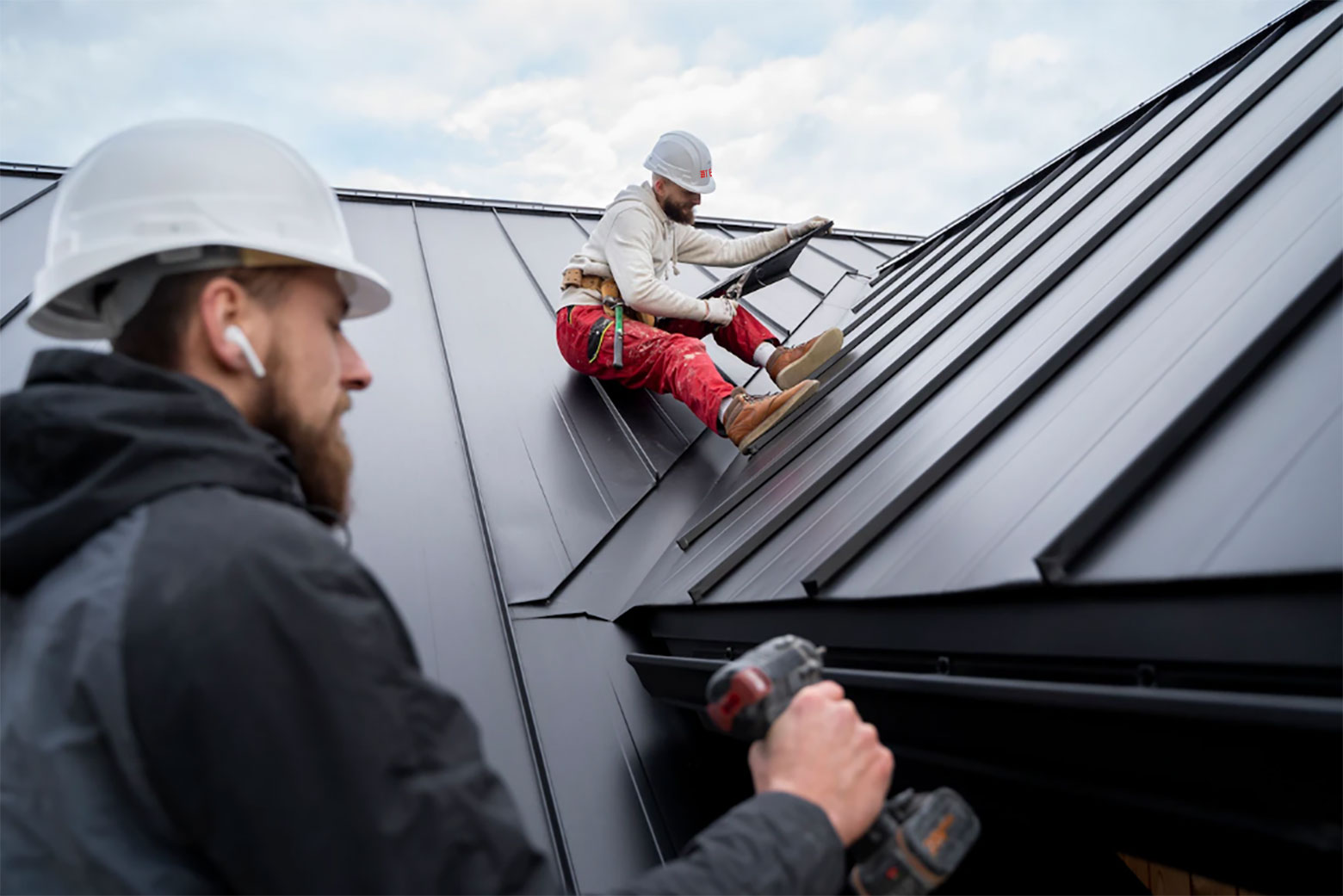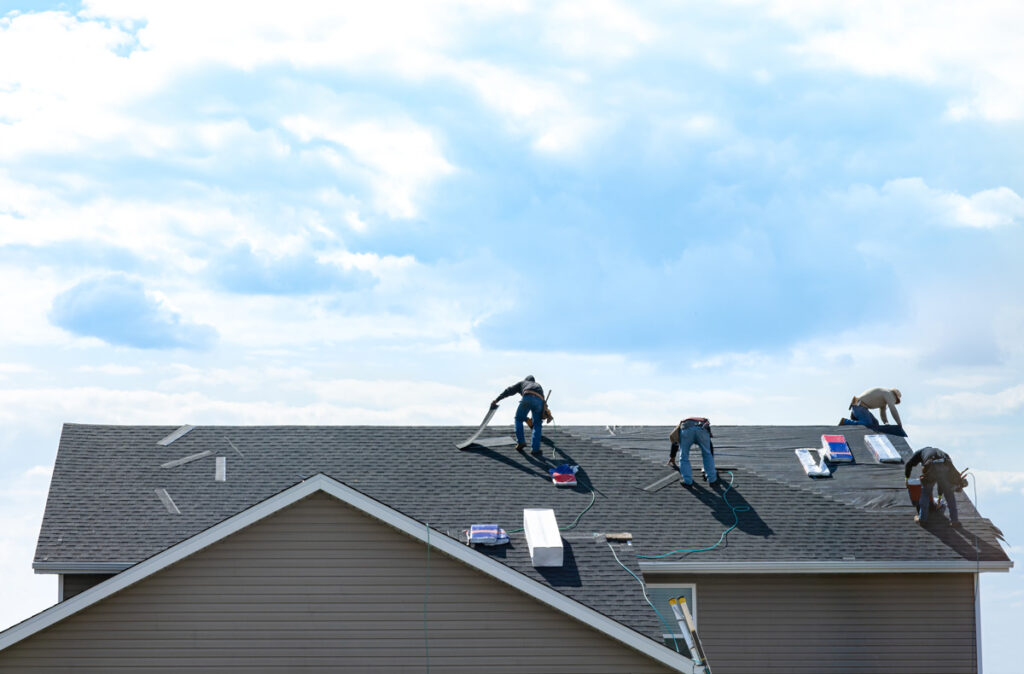Recognizing the Various Sorts Of Roofing Systems: A Comprehensive Overview for Homeowners
With a variety of options-- ranging from the conventional gable to the contemporary level-- each type presents special advantages and difficulties that need to line up with the house owner's environmental considerations and details requirements. As we discover the complexities of various roof kinds, it ends up being obvious that one size does not fit all; the appropriate option might surprise you.
Gable Roof Coverings
Gable roofs, characterized by their triangular shape, are among the most prominent roof covering styles as a result of their simplicity and performance in losing water and snow. This design includes 2 sloping sides that satisfy at a ridge, permitting effective drainage and lessening the danger of water buildup. The steep pitch typically connected with gable roofs improves their ability to manage heavy precipitation, making them appropriate for various climates.
Along with their practical advantages, gable roofs use visual convenience. They can be adjusted to various building designs, from typical to contemporary homes. The design can likewise accommodate added attributes such as dormer home windows, which boost natural light and air flow in the attic room room.
Moreover, saddleback roofs offer sufficient space for insulation, adding to power performance. Property owners can pick from a variety of roofing products, consisting of asphalt tiles, metal, and tiles, better boosting modification choices.
Regardless of their advantages, saddleback roofs might call for extra assistance in areas susceptible to high winds or hefty snowfall. Overall, the gable roof stays a popular selection because of its mix of performance, longevity, and aesthetic appeal.
Apartment Roofs
Flat roofs are frequently acknowledged for their minimalist design and functional applications, especially in industrial and business settings (oahu roofing). These roofing systems include a virtually horizontal or straight surface area, which enables simple construction and versatile area usage. While they may lack the aesthetic allure of angled roofs, level roofing systems offer numerous advantages, specifically in metropolitan settings where taking full advantage of area is important
One of the primary advantages of level roof coverings is their access. Homeowners can utilize the roof covering room for different purposes, such as roof yards, terraces, or solar panel installations. Furthermore, level roof coverings are generally extra affordable to mount and keep contrasted to their sloped equivalents, as they require fewer products and labor.
Usual materials utilized for level roofs include built-up roofing (BUR), modified asphalt, and single-ply membranes, each offering distinctive benefits. Generally, flat roofings serve as a versatile and practical selection for lots of house owners and businesses alike.
Hip Roofing Systems
Hip roofing systems are identified by their sloped sides that merge on top, developing a ridge. This design is distinctive from saddleback roofs, as all 4 sides of a hip roof slope downwards toward the wall surfaces, offering a more stable structure. The angle of the inclines can vary, enabling for adaptability in architectural aesthetics and functionality.
Among the main advantages of hip roofings is their capability to stand up to hefty winds and adverse weather. The sloped surfaces enable far better water drain, lowering the threat of leaks and water damages. In addition, hip roofs use enhanced attic room room, which can be used for storage space and even exchanged comfortable locations.
Nevertheless, constructing a hip roof can be extra complex and pricey than easier roof covering types, such as saddleback roofs. The additional product and labor associated with producing the inclines and making certain correct structural stability can lead to greater expenses. resource Regardless of these downsides, many homeowners prefer hip roofs for their resilience, visual appeal, and capacity for energy efficiency.
Mansard Roofings
Mansard roof coverings, usually acknowledged by their unique four-sided design, function 2 inclines on each side, with the reduced incline being steeper than the top. This building style, originating from France in the 17th century, is not just aesthetically appealing however practical, as it makes best use of the useful space in the upper floors of a structure. The steep reduced incline enables for even more clearance, making it an optimal selection for attics or lofts, which can be exchanged living rooms.
Mansard roofs are characterized by their flexibility, suiting different building designs, from conventional to modern. They can be built with different materials, consisting of asphalt tiles, slate, or steel, giving property owners with a series of alternatives to match their preferences and spending plans. In addition, the layout enables the combination of dormer windows, boosting natural light and ventilation in the upper degrees.
Nonetheless, it is vital to think about the prospective drawbacks. Mansard roofing systems may need more maintenance because of the intricacy of their layout, and their high slopes can be testing for snow and rainfall overflow. Overall, mansard roofs combine basics sophistication with functionality, making them a preferred selection among home owners seeking unique building attributes.
Lost Roofings
As property owners increasingly look for simpleness and performance in their building layouts, dropped roofings have actually arised as a prominent selection. Defined by a solitary sloping plane, a shed roof covering offers a minimal aesthetic that enhances various home styles, from contemporary to rustic.
Among the key advantages of a shed roof covering is its straightforward building and construction, which typically converts to lower labor and material costs. This design permits reliable water drain, minimizing the threat of leakages and water damages. In addition, the upright slope gives ample space for skylights, improving natural light within the interior.
Dropped roofings also offer adaptability in regards to use. They can be effectively integrated right into enhancements, garages, or outside structures like pavilions and sheds. Moreover, this roof covering design can suit different roof products, including steel, asphalt tiles, or also eco-friendly roofing systems, straightening with environmentally friendly initiatives.
Nevertheless, it is necessary to take into consideration local environment conditions, as hefty snow tons may demand changes to the roof's angle or framework. Generally, lost roofings provide a functional and aesthetically pleasing option for home owners seeking to make the most of capability without compromising style.
Verdict


Gable roofs, defined by their triangular shape, are amongst the most prominent roof designs due to their simplicity and performance look these up in losing water and snow. oahu roofing. The steep pitch generally linked with gable roofing systems improves their capacity to deal with hefty rainfall, making them appropriate for numerous environments
While they may lack the aesthetic charm of pitched roofings, level roof coverings use numerous benefits, specifically in urban environments where maximizing space is important.
